Tous nos cours et courses sont conçus de façon à être une suite logique d'apprentissage
Vous trouverez les exigences détaillées dans la description des cours et courses respectifs. Si vous n'êtes pas sûr si un cours ou une course est adaptée pour vous, vous pouvez simplement nous appeler. Nous vous conseillons volontiers!
Nous différencions les courses et séjours des cours de formation.
Cours de formation |
Courses et séjours |
|
Dans ces cours, peu importe à quelle étape, la formation est au premier plan. Elle se déroule presque partout sur des itinéraires et pas en salle de théorie. Notre style d'enseignement est très orienté sur la pratique. C'est dans des situations concrètes «en montagne» que nous vous transmettons le savoir-faire pratique.
Vous guidez vous-même de temps en temps, prenez des décisions de manière indépendante et recevez en fin de parcours un feedback du guide de montagne-coach. Et, compte tenu que vous n'avez pas seulement entendu, mais également vécu ces expériences personnellement, elles resteront aussi plus facilement en mémoire.
|
Ce sont de pures vacances avec de véritables souvenirs qui subsistent. Après peu de temps déjà, vous êtes loin des préoccupations du quotidien. Le guide de montagne prend toutes les décisions pertinentes, est responsable de la sécurité mais également de votre bien-être.
Avec un rythme de marche régulier, des emplacements de pauses choisies, ses aides ponctuelles et ses informations, il organise votre séjour en une expérience inoubliable.
plus... Sur demande, le guide de montagne transmet volontiers ses réflexions techniques. Avec les personnes intéressées, il pratique de temps en temps l'une ou l'autre des techniques d'alpinisme. Il est également captivant d'évaluer avec le guide de montagne la course effectuée et de planifier celles des jours suivants.
|
Les différentes étapes de niveau facilitent l'aperçu: |
|
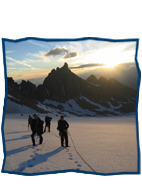
Initiation à Orny |
Base
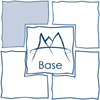
| Formation |
Courses/Séjours |
| Une mauvaise première séance, et c'est un rêve qui se brise! Suivez cette étape pour ne pas gâcher la "première fois". Vous apprendrez ici tout ce qu'il faut savoir dans les premières étapes visant à l'indépendance en montagne. |
A cette étape, les courses sont faciles pour des débutants ou pour des avancés souhaitant simplement passer un agréable moment en montagne. | |
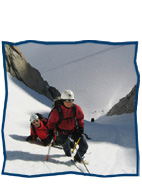
Couloir Copt, Orny |
Niveau 1
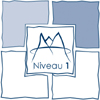
| Formation |
Courses/Séjours |
| Cette étape vous offre la formation nécessaire, afin de pouvoir planifier et exécuter des courses simples de manière autonome et de participer à des courses plus difficiles au sein d'un groupe. |
Les courses du niveau 1 sont des courses pour des personnes ayant déjà de l'expérience et pouvant déjà réaliser des courses faciles de manière autonome. | |
|
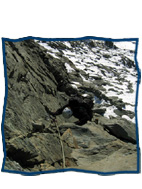
Arête du Hörnli, Cervin |
Niveau 2
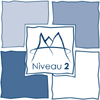
| Formation |
Courses/Séjours |
Vous souhaitez planifier et réaliser vous-mêmes de grandes courses ? Par exemple, du ski de randonnée ou de l'alpinisme en haute montagne? Alors, vous êtes ici au bon endroit !
Les cours du niveau 2 sont un moment privilégié à l'accession à l'autonomie. |
Courses, composée d'itinéraires variés, sélectionnés dans des niveaux de difficultés exigeants du point de vue technique et physique. Ces séjours permettent de se constituer, au fil des années, une liste de courses, composée d'itinéraires variés. | |
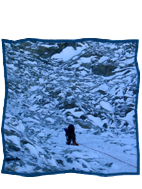
Face Nord,
Cervin |
Pro
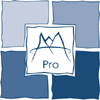
| Formation |
Courses/Séjours |
| Développer toujours son autonomie (en tête de cordée) et approfondir les techniques alpines. À cette étape, les "cracks" et les alpinistes ayant des fonctions d'encadrement ou qui souhaitent en avoir, reçoivent tous les éléments indispensables à leur fonction de chef ou de responsable. |
Une nouvelle progression dans les difficultés techniques pour arriver à des courses qui s'adressent aux bons grimpeurs. Ascension d'envergure en neige, glace et rocher ou mixte. | |
 |
Specials
Nos Specials sont des événements, des conférences, des cours sur les tendances actuelles ou sur des thèmes d'importance qui présentent un intérêt pour les alpinistes de tout niveau ou pour tout public intéressé. |
Les cotations, la tour de Babel? Savoir décrypter un topo, savoir choisir la course qui vous convient c'est mettre toutes les chances de votre côté pour passer un moment inoubliable.
La difficulté d'une course ou d'un sommet ne peut souvent pas être décrite précisément avec une seule notion ou symbole, aussi pratique que cela puisse être. Une évaluation utile et claire se compose de quatre critères :
-
Exigences en matière de condition physique
-
Exigences en matière de technique de ski
-
Exigences en matière de capacité technique: difficulté maximale en rocher, en neige et glace, en randonnée, en via ferrata
-
Exigences en matière d'engagement : exprime la longueur, l'éloignement, les difficultés d'approche et de descente, le caractère, la continuité, le nombre de longueurs difficiles, l'équipement en place, les risques objectifs.
BeMountain utilise un système de cotation efficace pour la classification de l'ensemble de son programme, du cours de formation dans les Alpes jusqu'à l'expédition.
Les icônes illustrent les exigences des différentes courses et/ou des expéditions en un seul coup d'oeil. Cela vous facilite un choix approprié. |
Exigences en matière de condition physique
 |
En forme: Pouvoir marcher 4 à 6h, dénivelé moyen 500 à 700m/jour. Prépa : footing, vélo, natation par paliers 1/2h env. |

|
Bonne forme : Pouvoir marcher 6 à 7h, dénivelé moyen 800 à 1000m/jour. Prépa : courir régulièrement 2 à 3 x sem., 1/2h, 8km |

|
Grande forme : Pouvoir marcher 7 à 8h, dénivelé moyen 1000m/jour. Prépa : 1h jogging, 3 fois/semaine, env. 10km |

|
Très grande forme : Pouvoir marcher plus de 8h, dénivelé moyen 1200m/jour |
> Plus d'infos sur la préparation personnelle de la condition physique
Exigences en matière de technique de ski
|

|
Moyen skieur : Savoir tourner et faire une conversion en toute neige, maîtriser sa vitesse et ses arrêts, débutant en ski de randonnée. |

|
Bon skieur : Savoir tourner sur toute piste (piste noire) et skier hors piste. Bonne maîtrise dérapage et conversion en montée et descente. |
 |
Très bon skieur : Maîtrise des techniques toutes neige : dure, croûtée, poudreuse, très bonne maîtrise dérapage et très bon contrôle vitesse et arrêt. |
 |
Très bon skieur alpiniste : Maîtrise parfaite des techniques, toute neige et tout terrain (glace) et techniques de virages sautés.
|
Exigences en matière de capacité technique
Difficulté maximale en rocher
|

|
Pour débutants, apprentissage des techniques de base de l'escalade, jusqu'au 4c
|

|
Maîtrise des bases de l'escalade, jusqu'au 5b en second, éventuellement expériences de voies de plusieurs longueurs.
|

|
Bonne maîtrise des techniques de l'escalade jusqu'au 6a en second et avoir une expérience de voies de plusieurs longueurs et éventuellement en tête de cordée. |

|
Très bonne maîtrise des pratiques de l'escalade. Evoluer en tête de cordée jusqu'au 6a et plus. Avoir une expérience de voies de plusieurs longueurs.
|
Difficulté maximale en neige et glace
|

|
Pour débutants, apprentissage des techniques de base de l'alpinisme en neige et glace. Utilisation de base du piolet, crampons, corde. Pente moyenne 20° / Passages les plus raides à 40°. Courses F (facile) à PD (peu difficile). |

|
Maîtrise des bases de l'alpinisme, maîtrise du piolet, crampons, corde pour être autonome. Pente moyenne 30° / Passages les plus raides à 50°. Courses PD (peu difficile)à AD (assez difficile). |

|
Bonne maîtrise des techniques alpines en tout terrain (glace et mixte). Autonome en cordée. Pente moyenne 40° / Passages les plus raides à 60°. Courses AD (assez difficile)à D(difficile). |

|
Très bonne maîtrise des techniques alpines. Expérimenté et autonome. Pentes supérieures à 65°. Courses D (difficile) à TD (très difficile).
|
Difficulté maximale en randonnée
 |
Randonnée : chemin ou sentier bien tracé. Terrain plat ou en faible pente, pas de risque de chute.
|

|
Randonnée en montagne : chemin ou sentier avec tracé ininterrompu et montées régulières. Terrain parfois raide.
|

|
Randonnée en montagne difficile : en général, sentier existant, les passages exposés peuvent être assurés avec des cordes ou des chaînes, appui des mains nécessaire pour l'équilibre. Quelques passages exposés, caillasse, pentes instables sans chemin. |

|
Itinéraire alpin : sentier parfois inexistant, itinéraire parfois sans chemin, l'aide des mains est quelquefois nécessaire pour progresser. Terrain assez exposé, pentes recouvertes d'herbe, pentes instables, glaciers simples, non recouverts de neige.
|
Difficulté maximale en via ferrata
|

|
Peu athlétique, facile, peu aérien, équipement abondant et sentier aménagé.
|

|
Passage athlétique court et isolé, moyennement aérien, contact avec le rocher, vires, ponts de singe.
|

|
Passages athlétiques assez long, quelques passages aériens, passage dépourvu d'équipement ou qualité de l'équipement irrégulier, surplomb, zone raide. |

|
Nombreux passages athlétiques avec passage très difficile, vertigineux, peu équipé, équipement peu fiable, paroi raide, zones surplombantes. |
Exigences en matière d'engagement
Exprime la longueur, l'éloignement, les difficultés d'approche et de descente, le caractère, la continuité, le nombre de longueurs difficiles, l'équipement en place, les risques objectifs.
 |
Itinéraire court, peu éloigné, avec une descente facile.
|
 |
Itinéraire plus long, avec peu de dangers objectifs et une descente simple.
|
 |
Itinéraire long, descente délicate. Risques objectifs éventuels.
|
 |
Itinéraire d'ampleur demandant une bonne expérience de l'alpinisme. Expéditions. Risques objectifs. Il peut y avoir une longue approche ou une descente compliquée. | |
|
|